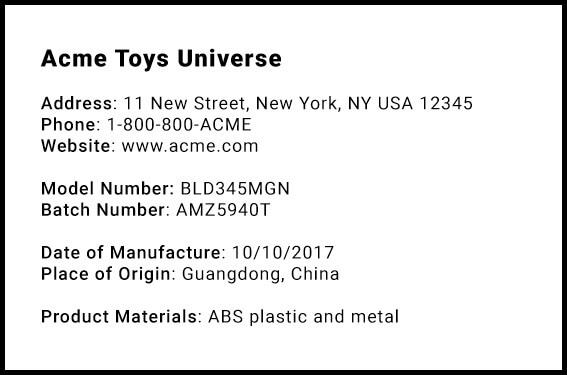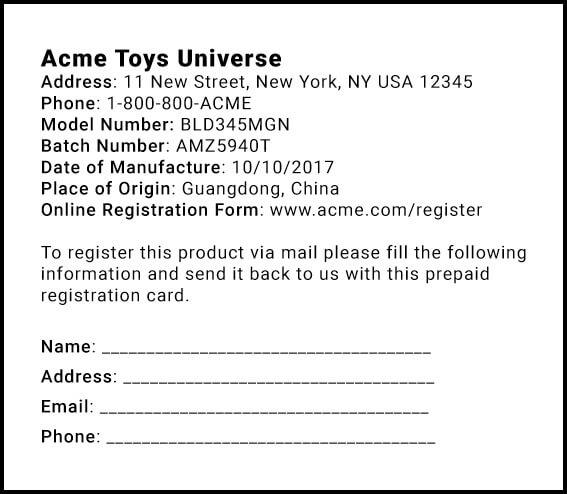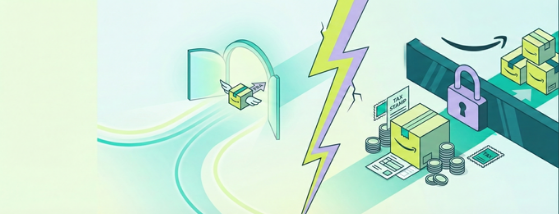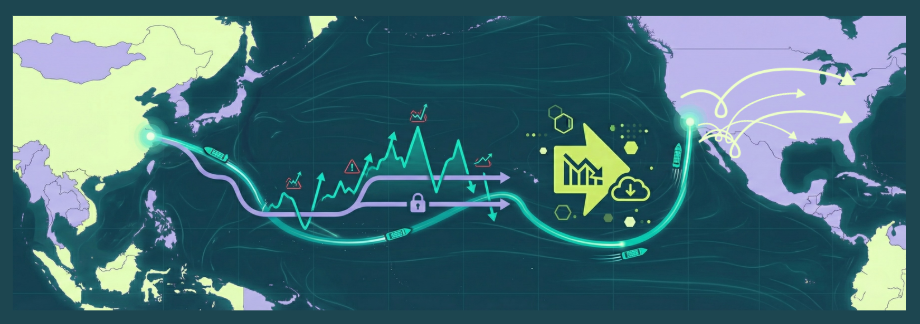Importing and reselling toys made abroad for sale in America can be very profitable, but your products have to be tested, approved and certified before they can be sold legally in the USA.
If you want to start importing toys or children’s products into the USA and make sure that your goods are safe and legal, you’ve come to the right place-read on to learn everything that you need to know.
In this article, we will look at the safety and certification rules for toys and children’s goods sold in the USA, and what you need to do to comply with them so to avoid a big fine or even, G_d forbid, jail time!
Who regulates toys imported into the USA?
CPSIA (the Consumer Product Safety Improvement Act) regulates toys and children’s products sold in the USA, as part of the Consumer Product Safety Commission (CPSC). This body requires toys and children’s products to carry a Children’s Product Certificate or CPC to be imported and sold legally in America.
What is classed as a toy or children’s product?
The CPSIA regulations don’t just apply to toys-they apply to all products that are designed for use by children aged 12 or under. This means that as well as toys, a wide range of other goods including children’s clothes, furniture, fashion accessories, ride-on vehicles, and hobby and sports equipment like children’s fishing rods and footballs all fall under CPSIA too.
If a product is meant for a child to play with or use in any context, it is classed as a toy or children’s product. If you’re not sure if the products you want to import are classed as toys/children’s products, the CPSC guides to make it easier for importers and resellers to understand.
- Are the goods marketed as being suitable or appropriate for children aged 12 or under?
- Does the packaging present the goods as suitable or appropriate for children of 12 or under to use or play with?
- Will the retail display (or online retailer) for the goods present them as being appropriate or suitable for children of 12 or under?
- Is the product generally recognized as a toy or something designed and targeting mainly children of 12 or under?
If the answer to any of these four questions is “yes,” then your products are considered to be toys or children’s products and have to meet the CPSIA regulations.
What are the different categories of toys?
Toys or children’s products sold in the USA are subjected to different levels of safety regulation, depending on the age of the children that they are aimed at or designed for. The younger the child, the stricter the rules.
Toys or children’s products for children aged 3 or under (infants) have the strictest rules, followed by those for children aged 3-5 (toddlers). Toys or products designed for children aged 6-12 is the final category, with slightly less strict regulations, because older children are better able to keep themselves safe and are less likely to swallow or chew their toys.
Toys and children’s products are divided into age groups in this way to make sure that very small children are protected from extra risks like potential choking hazards or the toxic effects of putting toys and other products into their mouths.
The CPSIA regulations
To legally import toys or children’s products for sale in the USA, the products have to meet the CPSIA regulations, and when it comes to toys imported from abroad instead of made in the USA, this is up to the importer. To meet the CPSIA regulations, there are several steps that you have to take before you can sell your products in the USA.
Your products have to comply with all relevant safety regulations, have undergone laboratory testing to prove it, and have a tracking label attached to the packaging and potentially, the product itself. Your goods also have to have a Children’s Product Certificate accompany them for import, showing that they are approved for sale in the USA.
Labeling requirements for different types of toys
All toys and children’s products sold in the USA have to have a Children’s Product Certificate to be legal (more on this further down), and there are also rules for labeling children’s products and toys too.
The tracking label
A tracking label has to be attached to the packaging of the products, and if possible, to the actual toy or product itself too. The tracking label is an important part of compliance for legal import and sale of toys, and CPSIA outlines what needs to go on the tracking label.
To be compliant, the tracking label has to show:
- The date and place that the product was made.
- The batch number or another identifier that displays the batch or run line, and any other marks that the manufacturer might need to be able to trace the product back to its source, later on, such which of their factories made it, or the batch that a certain order’s products came from. This is so that any product faults or recalls can be traced quickly and accurately.
- Imported products need to have a tracking label showing the importer’s details too, including their business address and contact details, and information on the materials used in the product.
- If you intend to sell stuffed toys in Ohio, Massachusetts or Pennsylvania, or if you sell online and ship to these states, there are also local licensing and labeling regulations to follow too. You can click the individual state links to find out more or check with the relevant Chamber of Commerce.
Additional labeling rules for infant and toddler products
As well as the tracking label, toys and products designed for infants and toddlers (children aged 5 and under) have to be sold with a product registration card.
The product registration card must be fixed to the product itself, and display:
- The manufacturer’s name and contact details.
- The date the item was made.
- The model name and batch number for the product, and any other relevant identifiers.
- It must include a prepaid shipping label to be used by the buyer for optional product registration and in case of recalls.
- Buyers must have the option to enter their contact details on the card and register their purchase, and the card should also give buyers the option to register their details online instead of mailing back the card.
- Records of registered buyers should be retained by the importer in case of future product recalls.
Choking hazard labels
If your toys or children’s products are very small or contain small parts-like marbles, ball bearings, balloons, beads and so on-they also need to be clearly marked with a warning label to show that they can pose a choking hazard and noting the child age range that they are safe for.
The choking hazard label requirements are as follows:
- If the product or toy is meant for children aged 3-6 years old and contains small parts, it must be labeled as a choking hazard due to small parts, and not suitable for children under 3.
- If the product consists of a ball smaller than 1.75 inches in diameter and is meant for children of 3 or older, it must be labeled as a choking hazard due to a small ball, and not suitable for children under 3.
- If the product contains a small ball and is meant for children between the ages of 3-8, it must be labeled as a choking hazard containing a small ball, and not suitable for children under 3.
- If the product is a balloon or contains a balloon and is meant for children of 12 or under, it must be labeled as a choking hazard, and include the text: “Children under 8 yrs can choke or suffocate on uninflated or broken balloons. Adult supervision required. Keep uninflated balloons from children. Discard broken balloons at once.”
- If the product is a marble and is meant for children of 3 or older, it must be labeled as a choking hazard and state “This toy is a marble. Not for children under 3 yrs.”
- If the product contains marble and is meant for children aged 3-8, it must be labeled as a choking hazard and state “Toy contains a marble. Not for children under 3 yrs.”
Product testing rules for toys imported to the USA
All toys and children’s products sold in the USA-wherever they were manufactured-have to go through third-party testing before they can be sold, and before the product can be issued with the Children’s Product Certificate that they need to be legal for sale.
The importer or manufacturer doesn’t get to choose just any laboratory to test the product either-you have to use one of the CPSC’s accredited laboratories.
Product tests make sure that the toy is safe for the child age range it is intended for, doesn’t contain small parts or choking hazards for children of that age group, and that the product doesn’t contain any potentially toxic or dangerous substances.
Make sure to choose a manufacturer or supplier that provides toys and children’s products that are compliant with the CPSC rules-otherwise you might find yourself in business with a company that cannot produce goods to the American standard. When you are visiting or contacting manufacturers, only consider those that produce goods to CPSIA standard, and that can show evidence of this.
This can be more complicated if you are getting a supplier to make something for you from scratch rather than buying goods already made for the American market-but by following a couple of simple guidelines, you can avoid being caught out and making a costly mistake.
- Get your manufacturer to provide you with a replica of the toy or product before going into production-made using the exact same materials, finishes and production methods as the finished products will be. Has this sample tested and approved before giving the go-ahead for production? Your full production run will also need to undergo batch testing later, but testing a sample first will help to ensure that you do not commission a full batch that will not pass testing.
- When it comes to batch testing-testing a sampling of the exact products you will be selling-choose your samples, and don’t let your supplier pick them for you. The samples that you have tested have to be exactly the same as the products you are going to sell, and so, should be picked at random-not specially designed or made for testing.
What are toys and children’s products tested for?
Toys and children’s products will be tested to ensure that they don’t contain banned substances, are not highly flammable, are durable, and do not pose a choking hazard or other potential risks.
CPSIA sets rules to limit the amounts of certain types of heavy metals and chemicals used in the manufacture of toys and children’s products, which may be dangerous or harmful to children. Different types of phthalates, a common type of plasticizer used in toys, are limited to the following quantities in toys of all types:
- DEHP: 0.1%
- DBP: 0.1%
- BBP 0.1%
While for toys that a child could put in their mouths, limits are set for the following types of phthalates too:
- DINP: 0.1%
- DIDP 0.1%
- DnOP: 0.1%
Another limited substance is lead, which is commonly used in paint and coatings. The surface or outer part of any toy or part of a toy that a child may handle can’t contain higher than 0.009% lead.
When your products are tested, they will be rejected if they are found to contain any of these substances at higher levels than those permitted.
If your toys or children’s products are meant for infants (children aged under 3) then they have to comply with the Small Parts Regulations standards before they can be issued with a Children’s Product Certificate. This applies to things like pacifiers, rattles, cribs, and anything else designed for use by infants and babies.
The Small Parts Regulations are intended to prevent the risk of choking, and products for children aged under 3 are tested using a tube chamber of around the diameter of a very small child’s throat. If the product or one of its parts fits fully into the chamber, it is considered to be a choking hazard and will be banned for sale for use by children under 3.
CPC certification for toys and children’s products
After your products have passed laboratory testing, they have to be accompanied by a Children’s Product Certificate (CPC) which is drawn up by the importer, in order to be legal to import for sale in the USA. This, accompanied by the product labeling rules we outlined earlier on, makes up the rules that cover the legal sale of children’s products and toys in America.
The importer of the goods is responsible for supplying the Children’s Product Certificate for their goods, and this certificate has to accompany all toys and children’s products entering the USA.
The certificate must show all of the following things:
- Identifying details of the product the certificate is for.
- The exact rules and regulations that apply to the product, such as the need for testing, and for small parts or young children’s toys and products, the Small Parts Regulations too.
- The details of the importer who is certifying the product.
- The contact details of the person who keeps the records of the product’s test results, which will usually be the importer.
- The place and date of the product’s manufacturer.
- The place and date of product testing.
- The details of the approved testing facility that performed product testing for certification.
Case study: a magnetic building blocks toy
To make it easier to understand the whole process you need to follow to legally import and sell a toy for children, we’ve drawn up a case study to help you out.
If you wanted to import and sell this product for sale via Amazon (a set of children’s magnetic block toys for ages 3 and up) we will talk you through the steps that you would need to take to legally import and sell the toy in the USA.
The product is designed for children aged 3 and older-so the additional regulations for importing products for children under 5 comes into play here too. From start to finish, here are the steps to follow.
Step one: The rules your toy must adhere to
First of all, determine the rules and regulations that will apply to your toys. For these magnetic building blocks, these are:
- Laboratory testing for safety and materials compliance.
- The tracking labeling requirements.
- Product registration labeling because the toy is designed for toddlers.
- Issuing of the Children’s Product Certificate (CPC).
- Find a manufacturer or supplier for the toys that comply with the CPSIA regulations.

- For a brand-new product, ask for a replica to be supplied before full production beginning, and have this tested to ensure that you will not find yourself in possession of a full shipment of toys that won’t be legal to sell.
Step two: Laboratory testing
- Find a CPSC approved laboratory to test your toys to ensure that they comply with the regulations on phthalates, lead and heavy metals, flammability, and suitability for the over-3 age group.
- Contact the laboratory directly and confirm that they can test your toys for compliance with the regulations above.
- Find out how many samples the laboratory will need, and how to send them for testing. It is a good idea to ask how long testing will take as well.
- From the larger order of toys you will be importing, choose a random selection of samples for testing, and package them with all the information that the laboratory you are dealing with asks from you such as your contact details as the applicant for testing, the name of the product, and if possible, additional information such as what the toy is made from.
- Send these samples off to the laboratory you have chosen from the CPSC list. When they have been tested and passed, the laboratory will return a full test report to you indicating that the toys have passed.
- An example of the product testing certificate you will receive from the laboratory is shown below:
Test_Results-1
Step three: The tracking label
Draw up a tracking label for the toys, which shows:
- The place and date that the toy was made.
- The toy’s batch number or production run, or anything else that will help the manufacturer trace the individual toy back to a specific factory or production run in the case of faults or recalls.
- Your details as the product’s importer, including your business address and contact details, and an outline of what the product is made of in this case, ABS plastic, and metal.
- Then, attach the tracking label to the packaging of each toy and if possible, each toy itself.

Step four: The product registration card
Because your toy is made for toddlers (children aged 3 and over) it must also have a product registration card. The information to put on the card is:
- The name and contact details of the manufacturer.
- The date the toy was made on.
- The batch number, model name, and any other details used to identify this specific toy.
- A prepaid shipping label with room for the buyer’s contact details, so that buyers can register their purchase if they want to, or using them in case of product recalls.
- Details showing how a buyer can register their purchase online if they want to, without the need to mail off the registration card.
- This product registration card should be attached or affixed to the toy itself.
- You should set up a system to record the details of buyers who register their purchases with you, in case of future product recalls.

Step five: The Children’s Product Certificate
Finally, you must issue your toys with a Children’s Product Certificate for import, which shows the following:
- The details (description) of the toy itself.
- The regulations that apply to the product, such as the product testing that your toys will have gone through.
- Your details as the importer who is certifying the product.
- The contact details of the person or office that holds the results of your product tests-usually yourself.
- The place and date the toy was made.
- The place and date of product testing.
- The details of the laboratory that tested and passed the toys as safe and legal.
- Make sure that the Children’s Product Certificate accompanies your toys for import-and that your freight forwarder also has a copy of the laboratory testing results to hand in case of queries upon arrival in the USA.
- Here is an example of a compliant Children’s Product Certificate for the magnetic building blocks: CPC-1
What happens if you breach the CPSIA regulations?
The CPSIA regulations are designed to keep consumers safe and ensure that toys and children’s products don’t pose a health hazard or risk to children. The rules are very strictly enforced, and breaching any part of them comes with heavy penalties.
After all, breaching the rules might place a child’s life at risk and this is something that everyone should take seriously.
If your products aren’t tested, properly labeled and certified, you could find yourself facing a hefty fine of up to $100,000 per violation, as well as, potentially, criminal prosecution that can lead to your assets being seized, and see you facing jail time of up to five years.
To avoid leaving yourself open to fines, penalties, and prosecutions, it is really important to make sure that your products are not only safe for the children that they are intended for-but that they are also properly tested, labeled and certified as legal for sale in the USA too.
It is important to understand exactly what is required of you before you attempt to import toys into the USA-if you are not sure if the products you plan to import are suitable for resale in the USA, or need assistance with meeting the requirements for compliance, leave a comment or contact us and we will be happy to help.
Further reading: POLYBAG REQUIREMENTS FOR AMAZON SELLERS – WHAT YOU NEED TO KNOW TO STAY SAFE AND LEGALLY COMPLIANT


